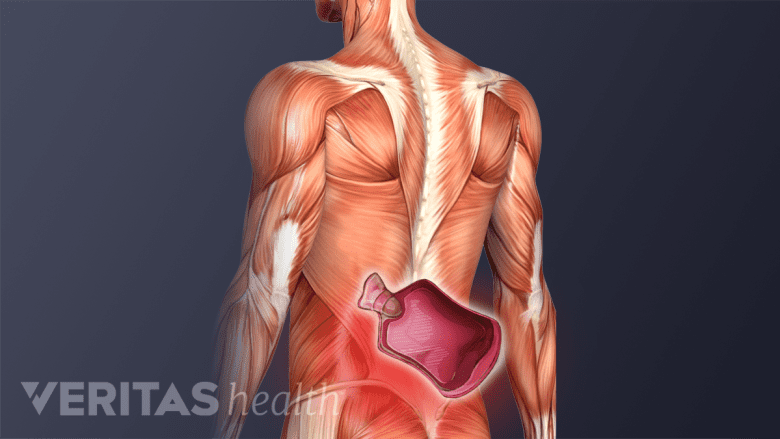In nonsurgical spinal decompression therapy, the spine is stretched and relaxed intermittently in a controlled manner. The theory is that this process creates a negative intradiscal pressure (pressure within the disc itself), which is thought to have two potential benefits:
- Pulls the herniated or bulging disc material back into the disc
- Promotes the passage of healing nutrients, into the disc and fosters a better healing environment.
In This Article:
- All About Spinal Decompression Therapy
- How Spinal Decompression Therapy is Thought to Work
- Potential Candidates for Spinal Decompression Therapy
Spinal Decompression Session
During spinal decompression therapy for the low back (lumbar spine), patients remain clothed and lie on a motorized table, the lower half of which can move.
- A harness is placed around the hips and is attached to the lower table near the feet.
- The upper part of the table remains in a fixed position while the lower part, to which the patient is harnessed, slides back and forth to provide the traction and relaxation.
One difference between various decompression therapies is the patient's position on the table:
- Some devices place the patient in the prone position on the table, lying face down (e.g. VAX-D)
- Some devices have the patient lying supine, face up (e.g. DRX9000)
The patient should not feel pain during or after the decompression therapy although they should feel stretch in the spine.
Treatment Series and Costs
Heat therapy can be applied before or after spinal decompression.
While spinal decompression therapy may be recommended as a potential treatment for a variety of lower back pain conditions, as with all lower back pain treatments, it is the patient's decision whether or not to have the treatment. Although the risk is low, the benefit of these treatments is not established.
See Non-Surgical Treatments for Lower Back Pain
Decompression therapy typically consists of a series of 15 to 30 treatments, lasting 30 to 45 minutes each, over a four to six-week period. Sessions are conducted in the practitioner's office.
The cost of each session typically ranges from $30 to $200, which means that a recommended series of treatments will typically cost from $450 to $6,000. Although insurance companies might pay for traditional traction, decompression therapy is not usually allowed although they are nearly the same.
Sessions may include additional treatment modalities, such as electric stimulation, ultrasound, and heat and cold therapy applied during or after the procedure.
Recommendations may also include drinking up to a half-gallon of water per day, rest, utilizing nutritional supplements, and/or performing exercises at home to improve strength and mobility.






